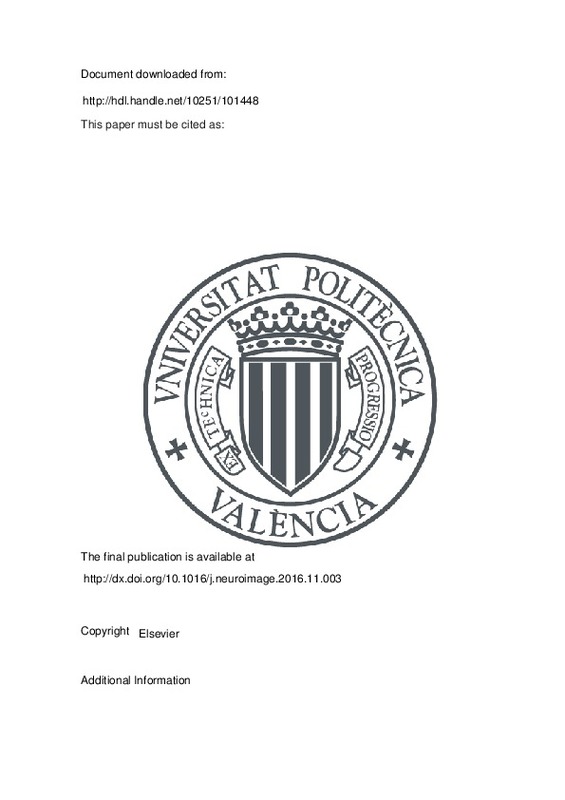JavaScript is disabled for your browser. Some features of this site may not work without it.
Buscar en RiuNet
Listar
Mi cuenta
Estadísticas
Ayuda RiuNet
Admin. UPV
CERES: A new cerebellum lobule segmentation method
Mostrar el registro sencillo del ítem
Ficheros en el ítem
| dc.contributor.author | Romero Gómez, José Enrique
|
es_ES |
| dc.contributor.author | Coupe, Pierrick
|
es_ES |
| dc.contributor.author | Giraud, Remi
|
es_ES |
| dc.contributor.author | Ta, Vinh-Thong
|
es_ES |
| dc.contributor.author | Fonov, Vladimir
|
es_ES |
| dc.contributor.author | Park, Min Tae M
|
es_ES |
| dc.contributor.author | Chalcravarty, M. Mallar
|
es_ES |
| dc.contributor.author | Voineskos, Aristotle N.
|
es_ES |
| dc.contributor.author | Manjón Herrera, José Vicente
|
es_ES |
| dc.date.accessioned | 2018-05-06T04:15:28Z | |
| dc.date.available | 2018-05-06T04:15:28Z | |
| dc.date.issued | 2017 | es_ES |
| dc.identifier.issn | 1053-8119 | es_ES |
| dc.identifier.uri | http://hdl.handle.net/10251/101448 | |
| dc.description.abstract | [EN] The human cerebellum is involved in language, motor tasks and cognitive processes such as attention or emotional processing. Therefore, an automatic and accurate segmentation method is highly desirable to measure and understand the cerebellum role in normal and pathological brain development. In this work, we propose a patch-based multi-atlas segmentation tool called CERES (CEREbellum Segmentation) that is able to automatically parcellate the cerebellum lobules. The proposed method works with standard resolution magnetic resonance T1-weighted images and uses the Optimized PatchMatch algorithm to speed up the patch matching process. The proposed method was compared with related recent state-of-the-art methods showing competitive results in both accuracy (average DICE of 0.7729) and execution time (around 5 minutes). | es_ES |
| dc.description.sponsorship | We want to thank the IXI - Information eXtraction from Images (EPSRC GR/S21533/02) datasets promoters for making available a valuable resource to the scientific community. This study has been carried out with financial support from the French State, managed by the French National Research Agency (ANR) in the frame of the Investments for the future Programme IdEx Bordeaux (HL-MRI ANR-10-IDEX-03-02), Cluster of Excellence CPU, TRAIL (HR-DTI ANR-10-LABX-57) and the CNRS multidisciplinary project "Defi Imagln". This research was also supported by the Spanish Grant TIN2013-43457-R from the Ministerio de Economia y competitividad. | en_EN |
| dc.language | Inglés | es_ES |
| dc.publisher | Elsevier | es_ES |
| dc.relation.ispartof | NeuroImage | es_ES |
| dc.rights | Reserva de todos los derechos | es_ES |
| dc.subject | Cerebellum lobule segmentation | es_ES |
| dc.subject | Non-local multi-atlas patch-based label fusion | es_ES |
| dc.subject | Optimized PatchMatch | es_ES |
| dc.subject.classification | FISICA APLICADA | es_ES |
| dc.title | CERES: A new cerebellum lobule segmentation method | es_ES |
| dc.type | Artículo | es_ES |
| dc.identifier.doi | 10.1016/j.neuroimage.2016.11.003 | es_ES |
| dc.relation.projectID | info:eu-repo/grantAgreement/MINECO//TIN2013-43457-R/ES/CARACTERIZACION DE FIRMAS BIOLOGICAS DE GLIOBLASTOMAS MEDIANTE MODELOS NO-SUPERVISADOS DE PREDICCION ESTRUCTURADA BASADOS EN BIOMARCADORES DE IMAGEN/ | es_ES |
| dc.rights.accessRights | Abierto | es_ES |
| dc.contributor.affiliation | Universitat Politècnica de València. Departamento de Física Aplicada - Departament de Física Aplicada | es_ES |
| dc.description.bibliographicCitation | Romero Gómez, JE.; Coupe, P.; Giraud, R.; Ta, V.; Fonov, V.; Park, MTM.; Chalcravarty, MM.... (2017). CERES: A new cerebellum lobule segmentation method. NeuroImage. 147:916-924. https://doi.org/10.1016/j.neuroimage.2016.11.003 | es_ES |
| dc.description.accrualMethod | S | es_ES |
| dc.relation.publisherversion | http://dx.doi.org/10.1016/j.neuroimage.2016.11.003 | es_ES |
| dc.description.upvformatpinicio | 916 | es_ES |
| dc.description.upvformatpfin | 924 | es_ES |
| dc.type.version | info:eu-repo/semantics/publishedVersion | es_ES |
| dc.description.volume | 147 | es_ES |
| dc.relation.pasarela | S\327839 | es_ES |
| dc.contributor.funder | Ministerio de Economía, Industria y Competitividad | es_ES |







![[Cerrado]](/themes/UPV/images/candado.png)

